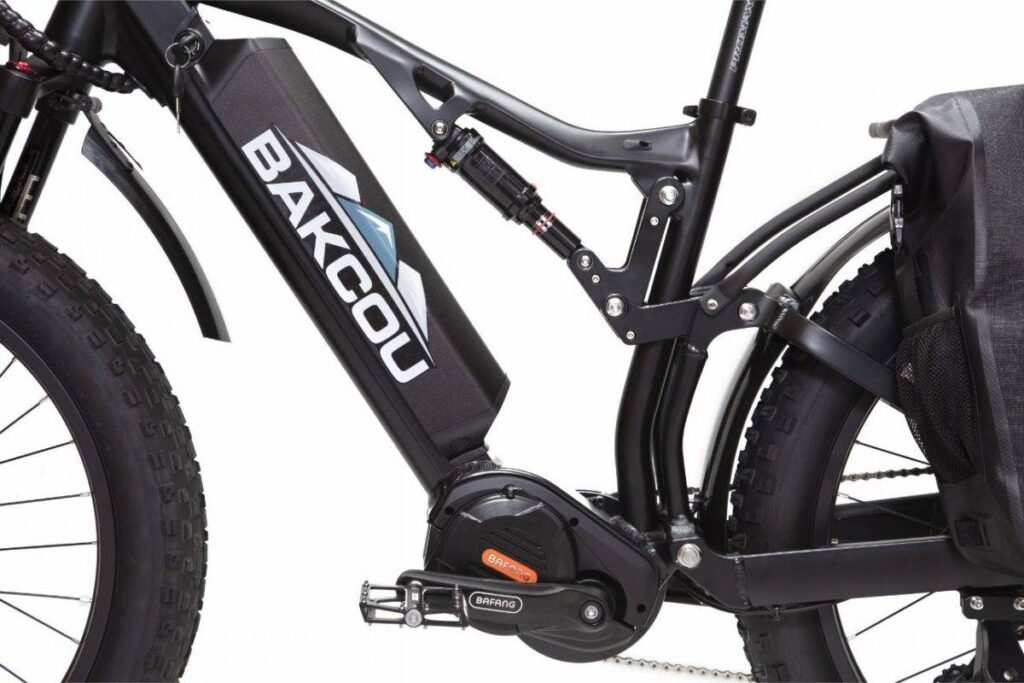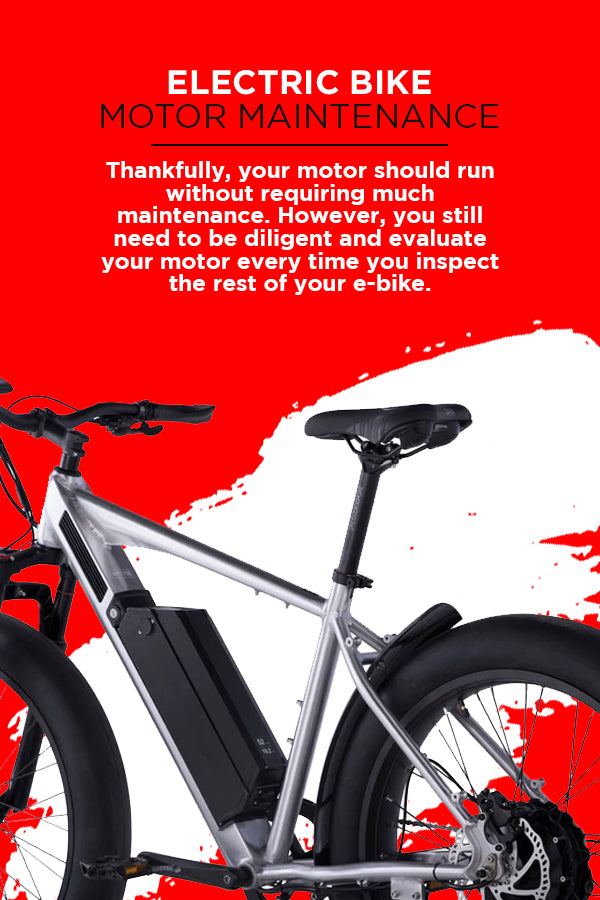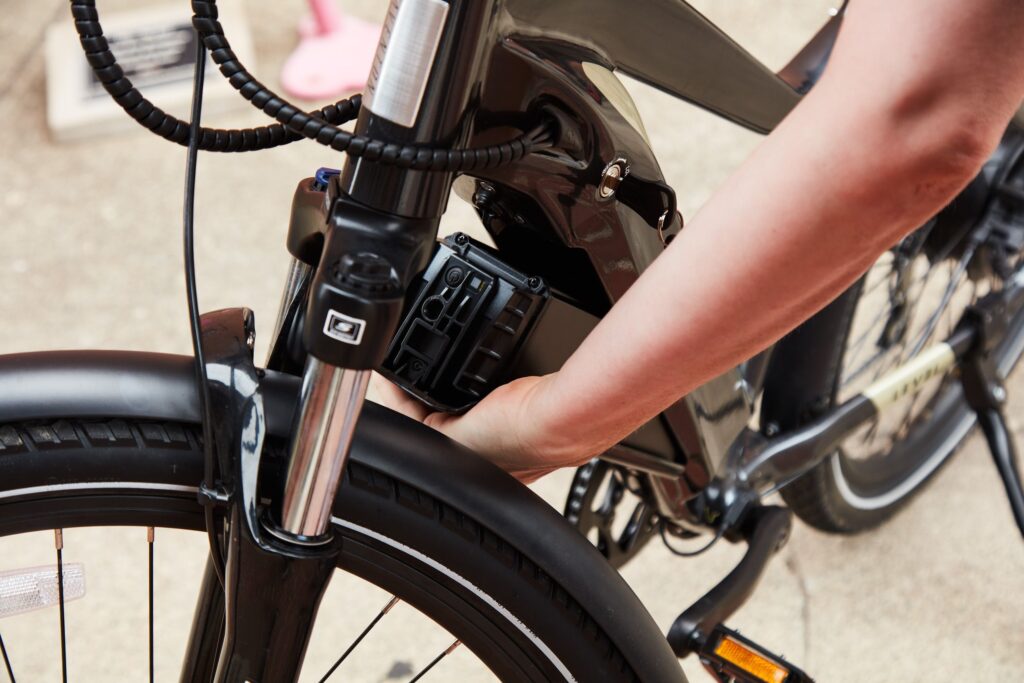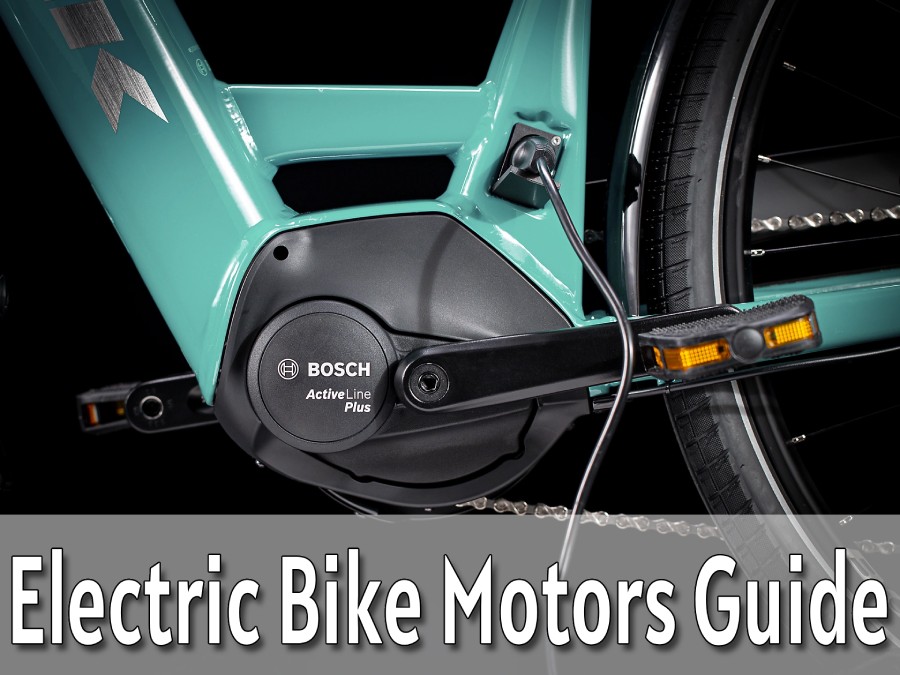In our “Comprehensive Guide to Motor Maintenance for Electric Bikes,” we have compiled everything you need to know about keeping your e-bike’s motor in top shape. Whether you’re a newbie or a seasoned rider seeking advanced tips, this guide is designed to be your go-to resource. We’ll provide easy-to-follow instructions, expert advice, and practical step-by-step methods. Additionally, we’ll suggest essential products and tools – conveniently linked to our affiliate partners – that can enhance your maintenance routine. While we encourage some DIY tasks, we’ll also emphasize the importance of seeking professional help for certain maintenance needs. By taking care of your electric bike’s motor, you not only enhance performance but also extend its lifespan, making it an essential aspect of responsible e-bike ownership, regardless of your riding preferences. So, let’s dive in and explore the world of motor maintenance for electric bikes!

Regular Cleaning
Maintaining a clean motor is key to ensuring optimal performance and longevity for your electric bike. Regularly cleaning the different components of the motor will prevent dirt, debris, and grime from causing damage or reducing efficiency. Here are some important areas to focus on when cleaning your motor:
Cleaning the motor casing
Start by cleaning the exterior of the motor casing. Use a soft cloth or sponge dipped in mild soap and water to gently wipe away any dirt or dust. Avoid using harsh chemicals or abrasive materials that could scratch or damage the casing. Take care to thoroughly dry the casing after cleaning to prevent moisture buildup.
Cleaning the motor vents
Next, pay attention to the motor vents. Over time, these vents can become clogged with dirt and debris, obstructing proper airflow and causing the motor to overheat. To clean the vents, use a small brush or compressed air to remove any buildup. Be gentle to avoid damaging the delicate components inside the motor.
Cleaning the motor connectors
Finally, it’s important to clean the motor connectors, which are responsible for transmitting electrical signals between the motor and other components. Use a brush or cotton swab dipped in isopropyl alcohol to gently clean the connectors and remove any corrosion or dirt. This will ensure a secure and reliable connection, minimizing the risk of electrical issues.
Checking for Loose Connections
Loose connections can disrupt the flow of power to the motor and affect its performance. Regularly inspecting and tightening the various connections in your electric bike’s motor system is essential. Here are some key areas to check:
Inspecting the motor wires
Start by carefully examining the motor wires for any signs of damage or loose connections. Inspect the wiring harnesses for frayed or exposed wires, and if any issues are detected, consider repairing or replacing the affected wires. Additionally, ensure that the wires are securely connected to the motor and other components of the system.
Checking the battery connections
Next, focus on the battery connections. These connections can sometimes become loose due to vibrations or regular use. Make sure the terminals are clean and free of corrosion, and tighten them if necessary. Ensuring a solid connection between the battery and motor is crucial for optimal performance and battery life.
Examining the controller connections
Lastly, examine the connections between the motor and the controller. The controller is responsible for regulating the flow of electrical energy to the motor, so it’s crucial that the connections are secure and in good condition. Inspect the wires and connectors, and tighten any loose connections. If you notice any damage or signs of wear, it may be necessary to replace the controller or seek professional assistance.
Inspecting for Damage
Regularly inspecting your electric bike’s motor for any signs of damage is important for preventing further issues and ensuring safe operation. Here are some areas to focus on during your inspections:
Checking for cracks or dents in the motor casing
Inspect the motor casing for any cracks, dents, or other signs of physical damage. These can be indicators of a more serious underlying issue. If you notice any damage, it’s important to address it promptly to prevent further deterioration and potential motor failure.
Inspecting the motor mounting bolts
Check the motor mounting bolts to ensure they are tight and secure. Loose or missing bolts can cause excessive vibrations, leading to motor inefficiency and potential damage. Tighten any loose bolts and replace any missing ones promptly.
Examining the motor bearings
The motor bearings play a crucial role in the smooth operation of the motor. Regularly inspect the bearings for any signs of wear, such as excessive noise or rough rotation. If you notice any abnormalities, consider having the bearings replaced to prevent further damage and ensure optimal performance.
Lubrication
Proper lubrication is essential for keeping your electric bike’s motor running smoothly and efficiently. Here are some areas that require regular lubrication:
Applying lubricant to the motor shaft
Apply a small amount of lubricant, specifically designed for electric bike motors, to the motor shaft. This will help reduce friction and wear, ensuring smooth operation. Follow the manufacturer’s recommendations regarding the type of lubricant to use and the frequency of application.
Greasing the motor bearings
To keep the motor bearings in good condition, apply grease regularly. Grease helps reduce friction and prevents premature wear. Again, refer to the manufacturer’s guidelines for the recommended grease and application frequency.
Lubricating the motor gears
If your electric bike has gears within the motor, they may require lubrication. Consult the manufacturer’s instructions to determine the appropriate lubricant to use and the recommended maintenance schedule. Properly lubricated gears will ensure efficient power transfer and minimize wear and tear.

Battery Maintenance
A well-maintained battery is essential for the overall performance and longevity of your electric bike. Here are some key maintenance tasks to consider:
Checking the battery voltage
Regularly check the battery voltage to ensure it remains within the recommended range. Use a multimeter or consult your electric bike’s user manual for instructions on how to perform this check. If the voltage is consistently below the recommended level, it may be necessary to replace the battery.
Cleaning the battery terminals
Over time, corrosion and dirt can accumulate on the battery terminals, impeding proper electrical contact. Clean the terminals with a mixture of water and baking soda using a small brush or cloth. Ensure the terminals are thoroughly dry before reattaching the connections.
Inspecting the battery wiring
Inspect the battery wiring for any signs of damage or wear. Look for frayed or exposed wires, loose connections, or signs of overheating. If you notice any issues, it’s important to address them promptly to prevent further damage and ensure safe operation.
Controller Maintenance
The controller is a vital component of your electric bike’s motor system, and proper maintenance is essential for optimal performance. Here are some maintenance tasks to keep in mind:
Inspecting the controller housing
Regularly check the controller housing for any signs of physical damage or excessive dirt buildup. Ensure that the housing is securely closed and free of cracks or dents. If you notice any issues, consult a professional for further inspection and potential repairs.
Cleaning the controller contacts
Clean the controller contacts using a small brush or cotton swab dipped in isopropyl alcohol. This will help remove any dirt, debris, or corrosion that may affect the electrical connection. Be gentle and avoid excessive force when cleaning to prevent damage to the contacts.
Checking the controller firmware
Check for available firmware updates for your controller. Firmware updates often include performance improvements and bug fixes. Consult your e-bike manufacturer’s website or contact their customer support for instructions on how to update the controller firmware.

Thermal Management
Proper thermal management is crucial for preventing overheating and ensuring the longevity of your electric bike’s motor. Here are some areas to focus on:
Checking the motor temperature
Regularly monitor the motor temperature during and after rides. Excessive heat can damage the motor, so it’s important to ensure it stays within the recommended operating range. If the motor consistently exceeds the recommended temperature, it may be necessary to adjust the power settings or seek professional assistance.
Inspecting the cooling fins
If your electric bike’s motor is equipped with cooling fins, inspect them regularly for any signs of damage or blockages. Clear away any dirt, debris, or obstructions that may impede proper airflow. This will help ensure effective heat dissipation and prevent overheating.
Cleaning the heat sink
If your motor has a heat sink, regularly clean it to remove any dirt or dust buildup. This can be done using compressed air or a small brush. A clean heat sink will enhance heat dissipation and help maintain the motor’s temperature within the optimal range.
Belt or Chain Adjustment
Proper belt or chain tension is crucial for optimal power transfer and efficient motor operation. Regularly inspect and adjust the tension as needed. Here’s what to keep in mind:
Inspecting the belt tension
If your electric bike is equipped with a belt drive system, check the tension regularly. The belt should be tight enough to prevent slippage but not excessively tight, as it can cause unnecessary strain on the motor. Consult your e-bike’s user manual for instructions on how to adjust the belt tension correctly.
Checking the chain tension
For bikes with a chain drive system, check the chain tension regularly. The chain should have a slight amount of slack, allowing for smooth operation without excessive sagging. Adjust the tension if needed, following the manufacturer’s guidelines.
Adjusting the belt or chain
If adjustment is necessary, follow the manufacturer’s instructions or consult a professional. Incorrectly adjusted belts or chains can result in poor performance, premature wear, or even damage to the motor. Take care to ensure proper alignment and tension for optimal results.

Motor Calibration
Proper motor calibration ensures accurate power delivery and efficient performance. Consult your e-bike’s user manual for specific instructions on motor calibration. Here are some common steps involved:
Performing a motor calibration
Motor calibration typically involves following a sequence of actions to calibrate the motor’s operation, such as resetting the torque sensor, setting speed limits, or adjusting pedal assist levels. This process may vary depending on your e-bike’s make and model, so consult the manufacturer’s instructions for accurate calibration steps.
Adjusting the motor torque sensor
If your electric bike is equipped with a torque sensor, ensure it is properly adjusted. The torque sensor measures the force applied to the pedals and adjusts the motor assistance accordingly. Proper calibration of the torque sensor ensures accurate power delivery and a seamless riding experience.
Checking the motor speed sensor
Verify that the motor speed sensor is functioning correctly. The speed sensor measures the rotation speed of the motor and helps control its performance. If you notice any issues with speed readings or unresponsive motor assistance, it may be necessary to recalibrate or replace the speed sensor.
Troubleshooting and Diagnostics
Even with proper maintenance, motor issues can occasionally occur. Being able to identify common problems and effectively troubleshoot them is important for maintaining the performance of your electric bike. Here are some steps to follow:
Identifying common motor issues
Familiarize yourself with common motor issues such as unusual noises, loss of power, or erratic behavior. Understand the potential causes of these issues, which can range from loose connections to motor damage. By identifying the problem accurately, you can take appropriate action to resolve it.
Using diagnostic tools
Invest in a multimeter or other diagnostic tools suitable for electric bike maintenance. These tools can help you measure voltages, detect shorts, and troubleshoot electrical problems. Use the tools in accordance with the manufacturer’s instructions and safety guidelines.
Seeking professional help if necessary
If you’re unsure about how to address a motor issue or if you encounter a problem beyond your knowledge or abilities, it’s best to seek professional help. Qualified electric bike technicians have the expertise and specialized tools to diagnose and repair complex motor problems safely.
Remember, regular motor maintenance is essential for the overall performance and longevity of your electric bike. By following these comprehensive guidelines, you can ensure that your motor runs smoothly, efficiently, and reliably for many rides to come.




